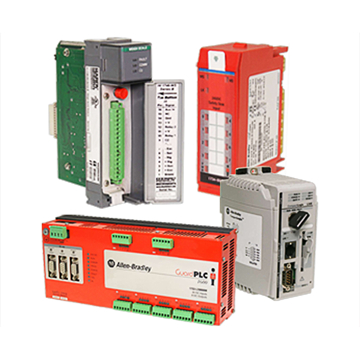Unlock the Secrets of Control System Components: Discover Their Uses and Specifications!
Control systems are the backbone of modern technology, vital in industries ranging from manufacturing to aerospace. They allow for automation, ensuring processes run smoothly and efficiently. Understanding the various parts that make up these systems is crucial for anyone looking to improve their functionality and overall performance. This article delves into the diverse types of control system parts, examining their specific uses and technical specifications. By grasping these concepts, you can optimize operations and make informed decisions about system designs and improvements.

Understanding Control System Parts
Control system parts are essential elements that contribute to the effective functioning of control systems. These components work together to monitor and regulate processes, ensuring the desired outcome is achieved with precision and reliability. At the heart of control systems lies the principle of feedback, where the output is constantly measured and compared to the desired input. This interaction among components enables the system to make adjustments in real-time, enhancing efficiency and accuracy. Understanding how these parts interact helps engineers and technicians troubleshoot issues and optimize system performance.
Types of Control System Components
Control systems comprise various components, each serving a unique role. The primary types include sensors, actuators, controllers, and interfaces. Sensors are responsible for gathering data about the system's environment, while actuators execute commands to affect change in the system. Controllers process the information from sensors and make decisions about how to respond, while interfaces facilitate communication between the system and its users. Each component is integral to the system's overall functionality, and understanding their characteristics is key to effective control system design.
Sensors
Sensors are the eyes and ears of control systems, providing crucial data about physical conditions. They come in various types, each designed to measure specific parameters. For instance, temperature sensors are vital in HVAC systems, ensuring environments remain comfortable and energy-efficient. Pressure sensors are used in industrial processes to monitor and control pressure levels, while flow sensors are critical in fluid handling applications. Each sensor type plays a significant role in ensuring the system operates within set parameters, making them indispensable in modern control systems.
Actuators
Actuators are the components that bring control systems to life, translating the controller's commands into physical actions. They can be classified into several types, including electric, hydraulic, and pneumatic actuators. Electric actuators are commonly used for precise control in applications like robotics, while hydraulic actuators are favored for their power in heavy machinery. Pneumatic actuators, on the other hand, are often used in applications requiring quick movements, such as in packaging machines. Understanding the different actuator types and their applications is essential for effective control system design.
Controllers
Controllers are the brains of control systems, interpreting sensor data and determining the necessary actions for the actuators. One common type of controller is the PID (Proportional, Integral, Derivative) controller, which adjusts its output based on proportional, integral, and derivative calculations of the error signal. This allows for precise control in dynamic environments, making PID controllers widely used in various industries. Their specifications, such as response time and accuracy, dictate how well they can manage the system, highlighting the importance of selecting the right controller for specific applications.
Interfaces
Interfaces are the communication bridges between users and control systems. They include human-machine interfaces (HMIs), which allow operators to interact with the system, and communication protocols that enable different components to exchange information. HMIs can range from simple displays to complex touchscreens that provide real-time data and control options. Understanding the significance of these interfaces is crucial, as they impact user experience and system efficiency. Effective interfaces enhance operational effectiveness, making it easier for personnel to manage system performance and respond to challenges.
Summary of Control System Parts
In summary, control system parts play a pivotal role in ensuring efficient and effective operations across various industries. From sensors and actuators to controllers and interfaces, each component contributes to the overall functionality of control systems. Selecting the right parts is essential for optimizing performance and achieving the desired outcomes. As technology continues to evolve, further exploration of control system components and their specifications will be vital for engineers and technicians aiming to enhance system designs and improve operational efficiency.
